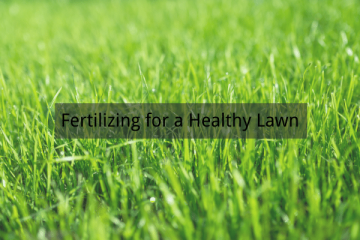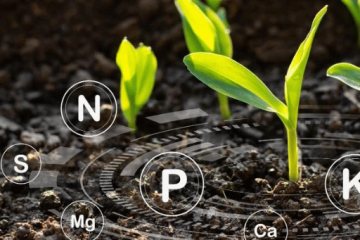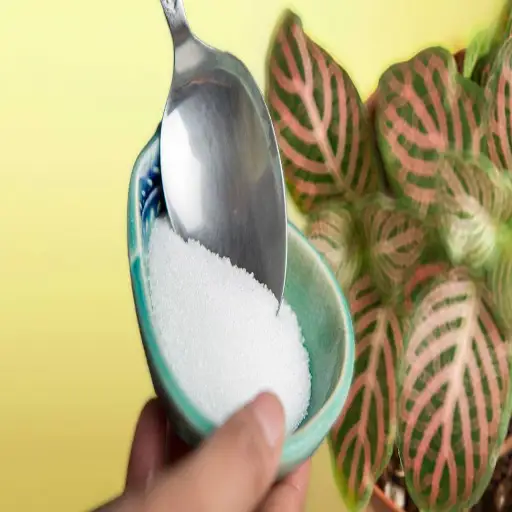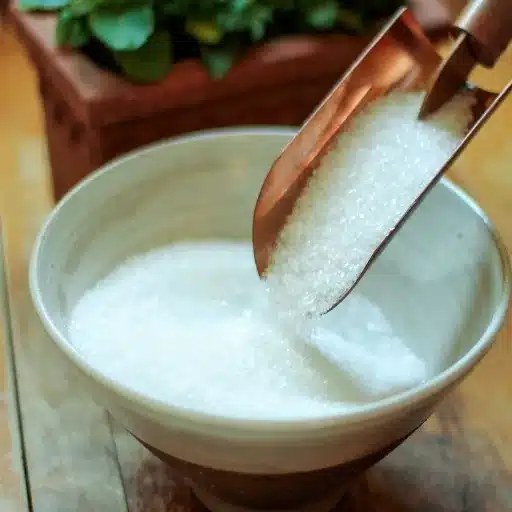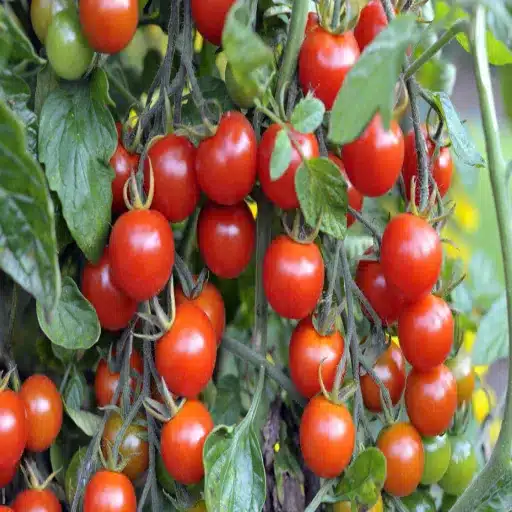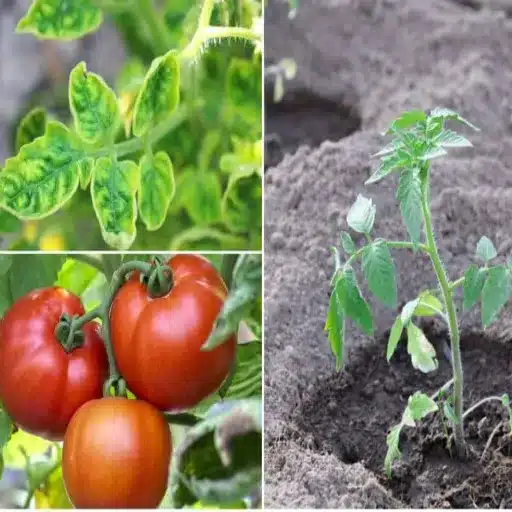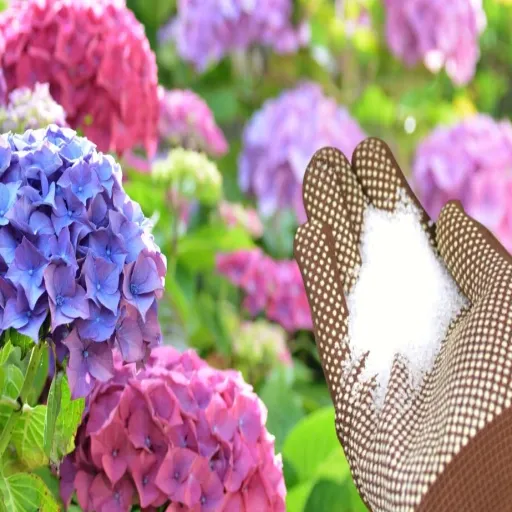When it comes to maximizing plant health and enhancing growth, Epsom salt has long been a topic of interest among gardeners and horticulturists. Known for its magnesium sulfate composition, Epsom salt is often touted as a natural remedy for nutrient deficiencies in plants, aimed at improving growth, flowering, and overall vigor. But what happens when scented Epsom salt is introduced into the equation? While the base component—magnesium sulfate—might still offer potential benefits, added scents or other ingredients could pose risks to your plants and soil. This article dives into the science behind using Epsom salt in gardening, examines the potential impact of scented varieties, and provides a grounded, evidence-based perspective on whether this popular gardening hack truly helps or harms. Prepare to uncover the reality behind the claims and ensure you’re making the best choice for your garden.
What is Epsom salt and how does it affect plants?
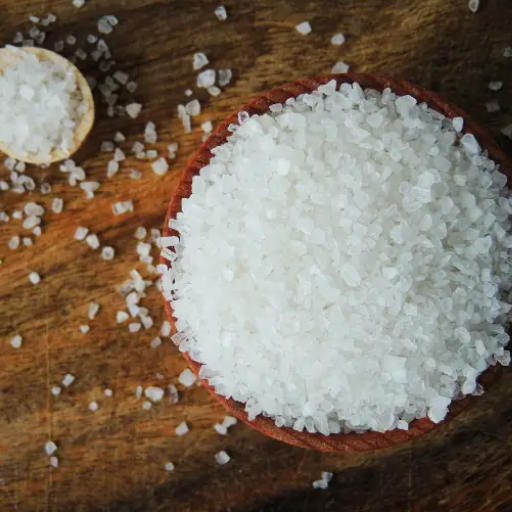
The role of magnesium and sulfur in plant growth
Both magnesium (Mg) and sulfur (S) are primary macronutrients required in the physiological functions of plants. Magnesium is an important element in chlorophyll, the photosynthetic pigment in plants. When magnesium is lacking, plants suffer from chlorosis which is a state when leaves do not have enough chlorophyll which makes them turn yellow. Furthermore, magnesium is an enzyme activator of some enzymes in carbohydrate metabolism and protein formation.
Sulfur is also important for plants because it is one of the constituents of some amino acids (cysteine and methionine), vitamins, and enzymes. It also helps in the formation of chloroplasts and proteins. There is a negative impact on growth in the absence of sulfur, causing pale yellow leaves and low crop productivity.
- Magnesium concentration in soil: The majority of plants prefer them at about 50 to 120 parts for every million (ppm) which differ according to the type of the plant and the constituents of the soil.
- Sulfur concentration in soil: Most crops usually tolerate 10 – 30 ppm of sulfur, as onions and the cruciferous family of vegetables are more demanding.
Both nutrients are mobile in the plant, so deficiencies appear in the older leaves first. However, too much magnesium or sulfur can inhibit the uptake of nutrients or alter the soil’s chemistry. This demonstrates why application based on soil tests and the unique requirements of your garden is so important.
Potential benefits of Epsom salt for plants
When used properly, chemical compounds such as epsom salt, or magnesium sulfate ( Mgso₄), can pose innumerable benefits for the growth of plants. Magnesium, for example, acts as a contributor to the production of chlorophyll which is essential for photosynthesis. On the other hand, sulfur plays an important role in the creation of amine enzymes. Overall, Gapsom salt has been proven to assist in nutrient retention, maximize the percentage of seeds that sprout, and bolster the growth of crops that are short on magnesium or sulfur. This is especially true for tomatoes, roses, and peppers.
- Magnesium Content: Epsom salt is typically composed of around 9.8% magnesium. Plant species such as tomatoes, roses, and peppers tend to need additional magnesium.
- Sulfur Content: It has an estimated 12.9% sulfur content which is very useful in both sulfur-sensitive plants and also in soils that need additional sulfur.
- Soil Additives: Aside from Magnesium and Sulfur, epsom salt does include three other beneficial, although less critical minerals; iron, carbon, and oxygen.
Even so, it is of utmost importance to state, that the use of magnesium and sulfur supplements, epsom salt specifically, without first verifying whether there is an actual mineral deficiency will almost always lead to an imbalance of nutrients. It is paramount to establish whether epsom salt should be added to the mix or soil tests should be done first to check the magnesium or sulfur levels.
Can scented Epsom salt be used on plants safely?
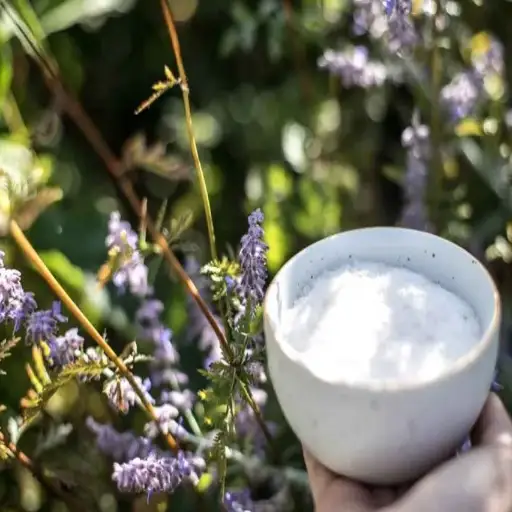
Differences between plain and scented Epsom salt
Epsom salt is simply magnesium sulfate (MgSO4·7H2O), a mineral compound found in nature that is used for both gardening and fulfilling particular deficiencies in plants’ magnesium and sulfur levels. It is non-toxic and free of additives which makes it safe for plant use when applied correctly.
On the other hand, Scented Epsom salt tends to have an add-in of important components such as essential oils, synthetic fragrances, or dyes which alters its scent and its health benefits. This type of Epsom salt when used in personal care products is benign but may pose a threat to soil and plants. For example, specific fragrances and dyes may change the soil’s pH, block water, and actively do microbiocide work which is detrimental to good plant health.
- Composition of Plain Epsom Salt: 99.5 percent or higher pure magnesium sulfate is its composition. It is neutral with its pH falling between 7 and 7.5, making it completely soluble in water.
- Additives of Scented Epsom Salt: Are Wild and have no set specification. Oftentimes include compounds that are organically volatile and may not get broken down through natural processes which makes them detrimental to soil.
Gardeners are advised to refrain from using scented Epsom salt due to the lack of certainty of its impact on the soil and plant health. For proper supplementation of nutrients, only plain unscented Epsom salt should be used. Before any application, a soil test must be done to establish the need and control imbalances of nutrients.
Potential risks of using scented Epsom salt on plants
Applying scented Epsom salt on plants involves several risk elements that need to be addressed. Firstly, the additional components within scented Epsom salt, for example, the fragrances and dyes, often have Volatile Organic Compounds (VOCs) or other synthetic chemicals that may negatively affect plant health. These matters have the potential to disrupt the soil microbiome, changing the balance necessary for nutrient absorption by plants. Additionally, such additives are highly unlikely to be biodegradable, which will lead to build-up in the soil and potentially harm its fertility and structure.
The presence of magnesium sulfate (MgSO4·7H2O) in plain Epsom salt solves magnesium and sulfur deficiency seamlessly. However, the addition of additive scented varieties would be counterintuitive as they would induce non-essential or reactive compounds which could impede the mobility and uptake of nutrient ions These chemicals could restrict mobility and shelf the uptake of nutrients. The soil pH is also capable of changing drastically due to these compounds, worsening the growth conditions and preventing a problem with bioavailability from other nutrients such as nitrogen, potassium, and even phosphorous.
To mitigate the risk, compliance with technical requirements is paramount. Before applying plain unscented Epsom salt, nutrient level,s and soil pH (which for most plants should be between 6.0 and 7.0) should be tested. Furthermore, magnesium toxicity or macro- and micronutrient imbalance can be avoided by following the dosage guidelines, which is one tablespoon per gallon of water for most plants.
How to use Epsom salt correctly in gardening
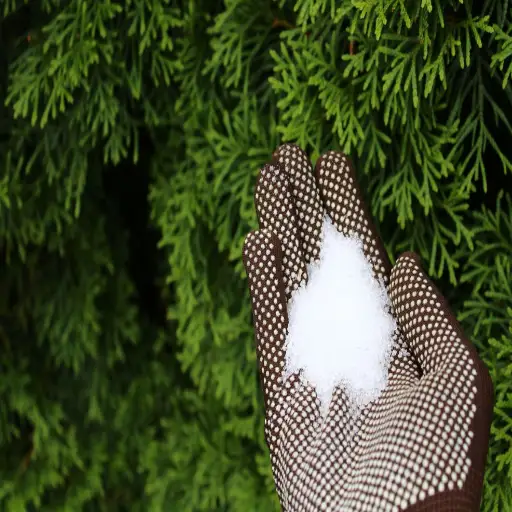
Proper dosage and application methods
When incorporating Epsom salt into gardening, consideration must be given to the dosage and application technique to avoid damaging the plants. For most common applications, 1 tablespoon (around 15 grams) of Epsom salt should be dissolved in a gallon (3.8 liters) of water. This solution can be applied directly to the soil around the base of plants or as a foliar spray. When utilized as plant foliar, be sure to mix the solution well and apply it to the underside of the leaves using a fine mist sprayer for maximum nutrient absorption. Apply in the early morning or late afternoon to prevent rapid evaporation and maximize nutrient uptake.
- Tomatoes and peppers: Apply every two weeks during the period of growth to aid in fruit development.
- Roses: 1 tablespoon per foot of rose plant height sprinkled directly around the base of the plant once a month.
Before application, examining the magnesium levels in the soil is key. A magnesium concentration of 50 to 120 ppm is most favorable for nearly all plants. Exceeding this range runs the risk of magnesium poisoning or disturbing calcium and potassium absorption. Soil health maintenance alongside timely supplementation is plausible through constant soil checking.
Which plants benefit most from Epsom salt
I have noted that plants that are high consumers of nutritional content, like magnesium and sulfur, significantly benefit from Epsom salt. Magnesium is necessary for the photosynthesis process because of its function in providing chlorophyll and activating enzymes, while sulfur is needed for making proteins. The main plant varieties that benefited from Epsom salt are:
- Tomatoes: An increase in fruit yield and quality can be obtained by using 1 tablespoon of Epsom salt diluted in a gallon of water every two weeks. Magnesium deficiency in tomatoes is more pronounced during fruit setting.
- Peppers: Use the same concentration as in tomatoes to increase yields and diminish blossom end rot.
- Roses: Adding 1 tablespoon of Epsom salt per foot of plant height on a once-a-month basis improves flower yield and further deepens foliage coloration.
- Fruit trees: Regular application (2 tablespoons in a gallon of water, 3-4 times while growing) optimizes fruit set and minimizes deficiency symptoms.
Soil magnesium levels should optimally be between 50 and 120 ppm because this range is beneficial to plants without disturbing the balance of other nutrients. Routine testing of the soil is necessary to prevent over-application that could negatively affect the absorption of calcium and potassium. The judicious application of Epsom salt in the described manner encourages healthy plant growth while ensuring an effective nutrient supply.
Are there alternatives to using Epsom salt for plant health?
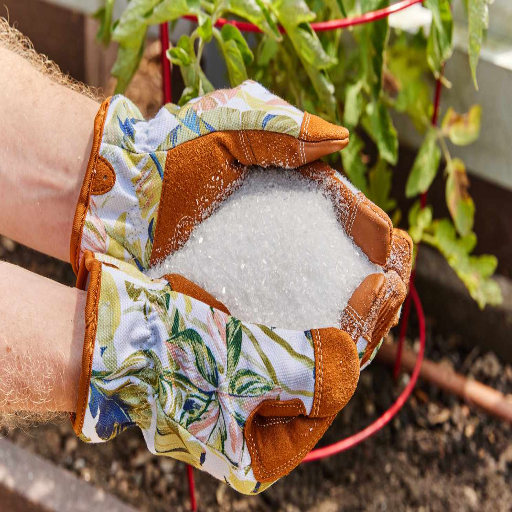
Natural fertilizers and soil amendments
There are alternative options to Epsom salt which include organic fertilizers and soil amendments. Compost works well due to its slow release of nitrogen, phosphorus, and potassium. Additionally, well-rotted manure is an excellent source of additional organic matter due to its balanced nutrient profile giving it an edge as another superb amendment.
Dolomite lime is an excellent alternative due to it being rich in both calcium and magnesium. This is more commonly used when the soil is too acidic as it increases pH. It is easier to use since it removes the hassle of high pH levels alongside needing soil test results. For acidic soil, the usual range is between 2 to 5 pounds per 100 square feet.
Kelp meal is perfect for boosting plant resilience in addition to being another great source of magnesium. The suggested application rate is between 1 to 2 pounds per 100 square feet but can be altered depending on the product label.
For those desiring a natural boost of magnesium without changing pH levels too much, langbeinite can easily be used. Depending on the crop’s magnesium requirements, this product can be applied at a ratio of 1 to 3 pounds for every 100 square feet of land. Such alternatives assist soil nutrition levels moderation and plant conservation practices sustainability.
Importance of soil testing before supplementing
Analyzing soil is a necessary action before the addition of any nutrient amendments. It yields exact information about the pH levels, macro (N, P, K), and micronutrient content and helps with developing a perfect supplementation strategy. Not having reliable soil information could lead magnesium insufficiencies to be misdiagnosed which would result in futile and disproportionate doses being applied that would negatively affect soil health.
- Optimal pH levels for most crops: Outs or over the pH range between 6 and 7.5 can significantly limit the scope of nutrient availability and their usage. This necessitates alterations.
- Magnesium Concentration: Depending on the crop requirements magnesium levels should namely be between 50 and 150 parts of a million for smooth functionality.
- Cation Exchange Capacity (CEC): Refers to the ability of a soil to retain nutrients. Lower CEC soils would need more supple but moderate doses.
- Base Saturation Ratios: The best magnesium saturation lies between ten to twenty percent of the base saturation for the proper chemistry of the soil.
However, soil analysis emphasizes avoiding amendments that could lead to nutrient dumping or blocking. Also, following data-backed guidelines promotes effective soils.
Common myths and misconceptions about Epsom salt in gardening
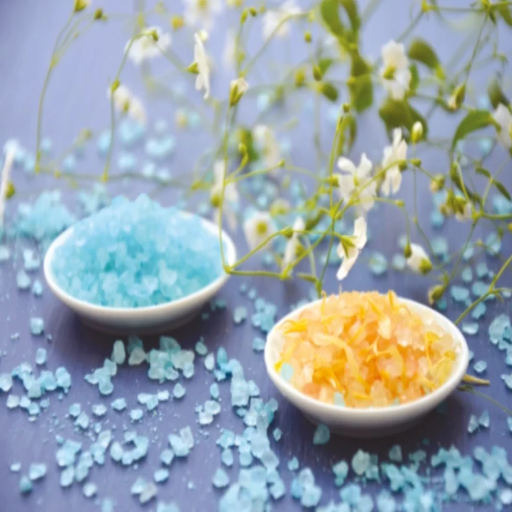
Debunking exaggerated claims about Epsom salt benefits
Like gardeners using Epsom salt for magnesium deficiency, people suffering from magnesium deficiencies might be curious about the role Epsom salt and magnesium sulfate ha may have in treating their deficiency. As much as alkalis seem like the perfect solution for aging bones filled with osteoclasts, they seem more nuanced than they appear like. Magnesium is crucial for photosynthesis, but only when soil tests have magnesium levels equal to or less than 50-150 parts per million should it be integrated. Otherwise, over-supplying magnesium might disturb calcium and potassium absorption, creating an even greater nutritional imbalance in the body.
In the same manner, claims that Epsom salt has a significant impact on flowering or fruiting are exaggerated. While magnesium sulfate may aid certain plants such as roses or tomatoes with a deficit of nutrients, its contribution is secondary and should correspond with soil tests and the plant’s requirements.
- Magnesium threshold in soil: Epsom salt use may be justified below 50 ppm.
- Sulfur role: Assists with protein creation, though is rarely lacking as soils usually have enough natural reserves.
- Application Rates: Standard practice is to add approximately 1 tablespoon of Epsom salt for every gallon of water intended for spraying on leaves or soaking the soil, but like most other practices, should be adjusted to the severity of the deficiency.
Therefore, the need for soil analysis data and a stepwise approach is crucial in the case of Epsom salt application to avoid ineffective results. Such a practice may result in the misallocation of resources and simultaneously interfere with soil nutrient balance resulting in poor plant health over an extended period.
Understanding when Epsom salt may do more harm than good
The application of Epsom salt should be considered in the context of its potential impacts on soil and plant health. Overuse of Epsom salt can upset the ratio of critical nutrients like potassium and calcium since magnesium competes for absorption alongside those two elements. Furthermore, excessive application can increase soil salinity which can be damaging to plant root systems and stunted growth.
- Magnesium Levels in Soil: Magnesium concentrations of 50 ppm or more provide problems of Epsom salt nutrient competition and toxicity.
- Calcium-to-Magnesium Ratio (Ca/Mg): Optimal ratios on soil Epsom salt Ca to Mg ratio should be around 6:1. This provides a balance that allows for at least some nutrient absorption.
- Interference of Potassium: Excessive Epsom salts magnesium can lower potassium’s lability which can greatly reduce photosynthetic activity and plant health.
- EC: Excessive salts can increase the electric conductivity of soil which can lead to osmotic stress in plants.
Taking all of this into consideration, the application of Epsom salt on the soil should be based on a careful analysis and soil testing. The goal should be to maximally correct all deficiencies while having properly balanced soil.
Reference sources
Frequently Asked Questions (FAQs)
Q: What plants benefit from Epsom salt and which will kill?
A: Epsom salt can be beneficial for plants like tomatoes, peppers, and roses, which often need more magnesium. However, it’s not suitable for all plants. Overuse can harm your plants, especially those that don’t require extra magnesium. Always test your soil before adding Epsom salt to ensure it’s necessary and won’t damage plant health.
Q: How should I go about adding Epsom salt to my vegetable garden?
A: When adding Epsom salt to your vegetable garden, dissolve 1-2 tablespoons of Epsom salt per gallon of water and use as a foliar spray or soil drench. Apply this solution to your plants every 4-6 weeks during the growing season. Remember, it’s crucial to test your soil first to determine if your plants need the additional magnesium.
Q: Can I use Epsom salt on potted plants?
A: Yes, you can use Epsom salt on potted plants, but with caution. For potted plants, use a more diluted solution of 1 teaspoon of Epsom salt per gallon of water. Apply this monthly during the growing season. Be careful not to overuse, as container plants are more susceptible to nutrient imbalances.
Q: How much Epsom salt per gallon of water should I use for tomato plants?
A: For tomato plants, add one tablespoon of Epsom salt per gallon of water. Apply this solution to the base of the plants every two weeks during the growing season. This can help provide essential nutrients, particularly magnesium, which tomatoes often need for healthy growth.
Q: Is the use of Epsom salt safe for all plants in my garden?
A: While Epsom salt is safe for many plants, it’s not universally beneficial. Some plants, like tomatoes and peppers, respond well to it. However, overuse can lead to magnesium toxicity or nutrient imbalances. It’s best to use Epsom salt selectively based on your plant’s specific needs and soil conditions.
Q: What are the benefits of using Epsom salt (MgSO4) in gardening?
A: Epsom salt (MgSO4) can provide several benefits in gardening. It supplies magnesium and sulfur, which are essential nutrients for plant growth. It can improve seed germination, and chlorophyll production, and help plants better absorb other nutrients like phosphorus and nitrogen. However, these benefits are most noticeable in magnesium-deficient soils.
Q: How often should I apply Epsom salt to my plants?
A: The frequency of Epsom salt application depends on your plants’ needs and soil conditions. Generally, for outdoor plants, apply a solution of 1-2 tablespoons per gallon of water every 4-6 weeks during the growing season. For potted plants, use a more diluted solution monthly. Always monitor your plants’ response and adjust accordingly.

